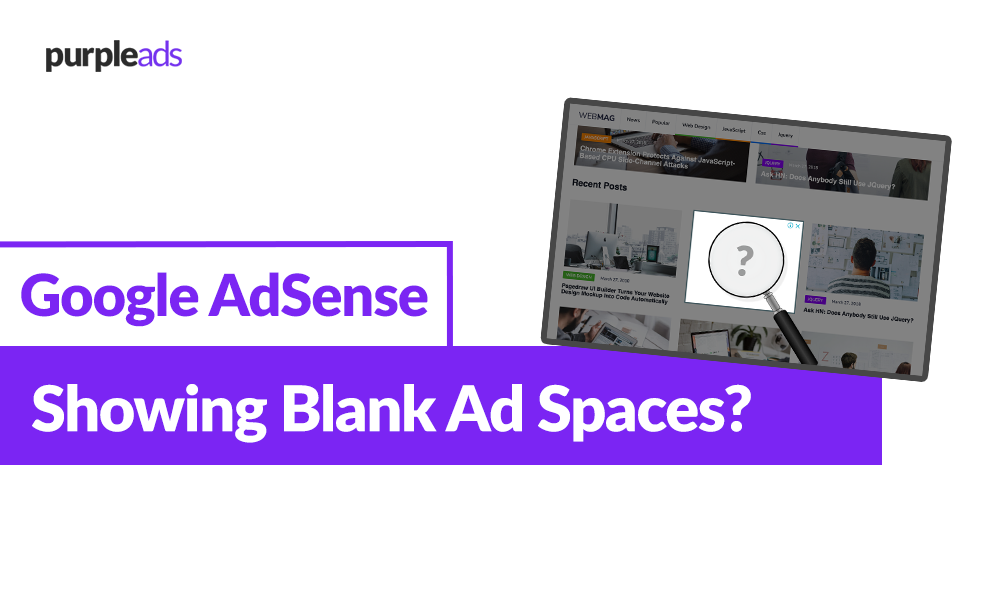Introduction to Google Adsense Blank Ads
Google AdSense is a powerful monetization tool for website owners and bloggers, allowing them to earn revenue by displaying targeted ads on their platforms. However, encountering blank spaces or ads on your website can be frustrating and impact your potential earnings. In this comprehensive guide, we will delve into the reasons behind Google AdSense blank ads or blank ad spaces, common causes, and effective strategies to fix and optimize your ad space.
Understanding Google AdSense Blank Ad Space
Blank ads refer to instances where the designated ad space on your website is empty, displaying no content or visual elements. This issue can arise for various reasons, impacting both user experience and potential revenue generation.
Common Causes of Blank or Empty AdSense Placements
Insufficient Ad Inventory
One primary reason for blank ads is the lack of available ads in the AdSense inventory. Advertisers might not be bidding on your ad space, leading to empty slots, unfilled adsense ad spaces, and loss of revenue.
Low-Quality Content
Google AdSense prioritizes high-quality content and may not display ads on pages with insufficient or irrelevant content. Ensure your content is valuable and aligned with Google’s policies.
Ad Blockers
Users employing ad blockers can disrupt the ad-serving process, resulting in blank spaces on your website. Encourage users to disable ad blockers to enhance their experience and support your content.
Invalid Ad Unit Code
A common technical issue is an invalid or improperly implemented ad unit code. Review your code to ensure it is correctly integrated into your website’s HTML.
How to Fix Google AdSense Blank Ads
Increase Ad Inventory
Optimize your website’s content to attract more advertisers. Focus on creating high-quality, relevant content that aligns with your target audience and encourages advertisers to bid on your ad space.
Improve Content Quality
Conduct a thorough content audit to ensure your website provides valuable information to users. Address any issues related to low-quality or irrelevant content that may hinder ad display.
Encourage Ad Blocker Deactivation
Educate your audience about the impact of ad blockers on your revenue and request them to disable these tools for your site. Offer incentives such as an ad-free user experience for supporters.
Verify Ad Unit Code
Double-check the implementation of your ad unit code. Ensure it is correctly inserted into the HTML of your website, and there are no typos or errors that might prevent ads from displaying.
Optimizing Ad Performance for Better Results
Ad Placement and Size
Experiment with different ad placements and sizes to find the most effective combination for your audience. Consider placing ads strategically within your content for better visibility.
Responsive Ad Units
Utilize responsive ad units that automatically adjust their size based on the user’s device and screen resolution. This ensures a seamless ad experience across various platforms.
AdSense Experiments
Leverage Google AdSense’s experimentation features to test different ad settings. A/B testing can help you identify the most effective ad configurations for your specific audience.
Regularly Update Content
Keep your website’s content fresh and relevant. Regular updates not only attract more visitors but also signal to Google AdSense that your site is active and engaging.
Conclusion
Overcoming Google AdSense blank ads requires a combination of strategic content creation, technical optimization, and user engagement. By addressing the common causes and implementing the suggested fixes, you can enhance your ad display, improve user experience, and maximize your revenue potential through Google AdSense. Stay proactive in monitoring and optimizing your ad performance to ensure ongoing success in the dynamic world of online advertising.

